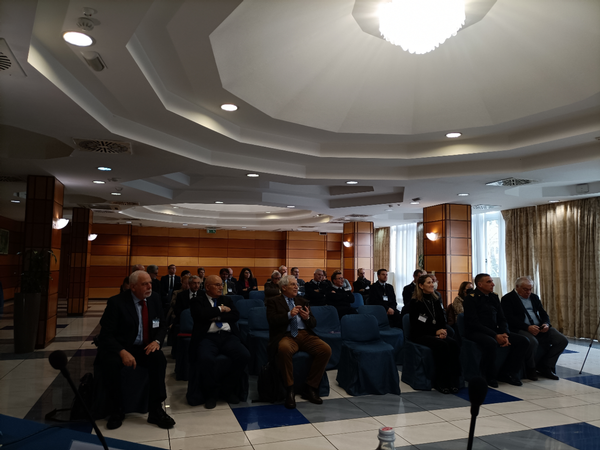The event "Innovation and Vaisala Technologies for ‘Mission Critical' Meteorological Measurements" was held in Rome in January. It was organized by the chapter in cooperation with Vaisala Oyj and the support of its representative Eurelettronica ICAS, both members of AFCEA.
The workshop aimed to present innovative measurement technologies designed to improve reliability and ensure safe and efficient operations. Lt. Gen. Antonio Tangorra, ITAF (Ret.), chapter president, introduced the meeting by emphasizing AFCEA's focus on the increasingly critical environmental challenges related to climate change and the importance of decisions being based on accurate, reliable, real-time data.
Aleksis Kajava, vice president and head of markets, Europe and Latin America, opened the session by highlighting Vaisala's focus on research, for which it spends 12% of revenues and has recently built a new dedicated center. Kajava introduced the family of weather radars, available in both X-band and C-band, which uses an innovative "compact" architecture, an antenna specifically designed for dual polarization, patented algorithms for signal processing, and with both magnetron and solid-state transmitter types available, an innovative technology that improves operational radar capabilities and reduces total cost of service. Vaisala also developed the specific, user-friendly, web-based IRIS Focus software suite, which enables users to access and analyze remote sensing data quickly and in a guided manner.
Finally, it also introduced the new DIAL profiler, a major innovation in remote sensing monitoring, which can operate continuously to provide real-time water vapor profiles and improve severe weather nowcasting.
Following this, Martino Fantato presented the next-generation ceilometer, CL61, which allows monitoring of the cloud cover of the sky and measuring the height of cloud layers. This is of great help in characterizing the atmosphere, as it can also collect information on the phase, liquid or solid, of the water particles that make up the clouds present along the vertical profile of up to about 10 km from the Earth's surface.
Alessandro Marchini then presented the Wind Cube, an innovative and versatile Lidar system for real-time measurements of wind and aerosol backscatter. The Wind Cube performs continuous scans for 3D measurement of wind fields up to 10 km and more. And thankfully, sophisticated algorithms offer the possibility of detecting the height of PBL.
The workshop was closed by Tommi Linna, product manager, who presented the technology of the FD70 sensor, an innovative forward scatter sensor capable of simultaneously performing both the function of a visibilimeter/present time and a disdrometer, with a high degree of accuracy. The sensor utilizes two receivers combined with a near-infrared light source in "thin light sheet" mode, and by analyzing each particle, it can effectively and timely discriminate between liquid and frozen particles to ensure reliable measurements.
|



